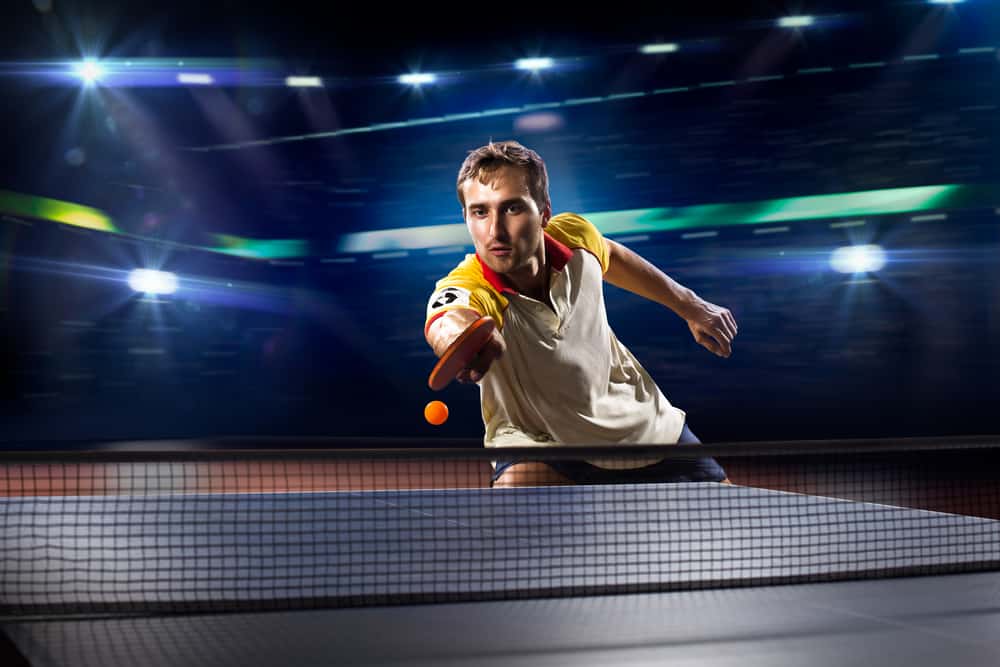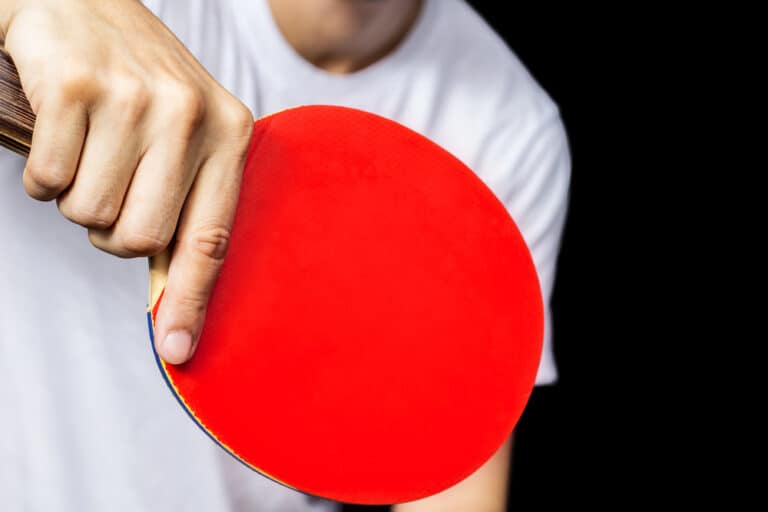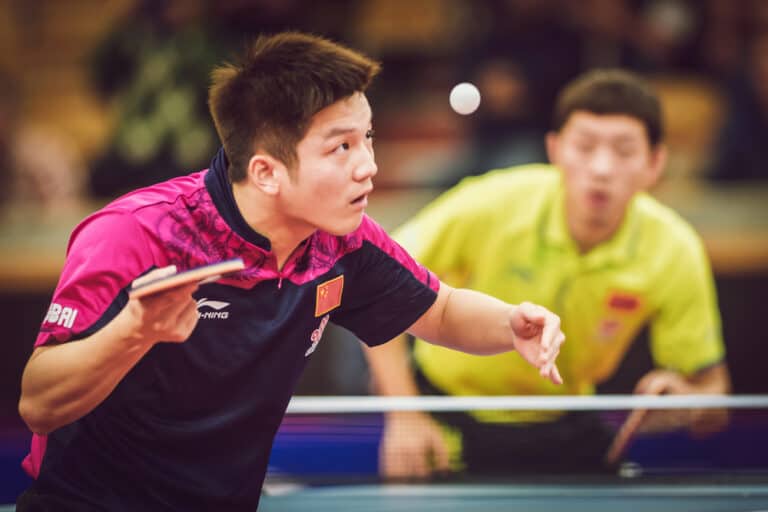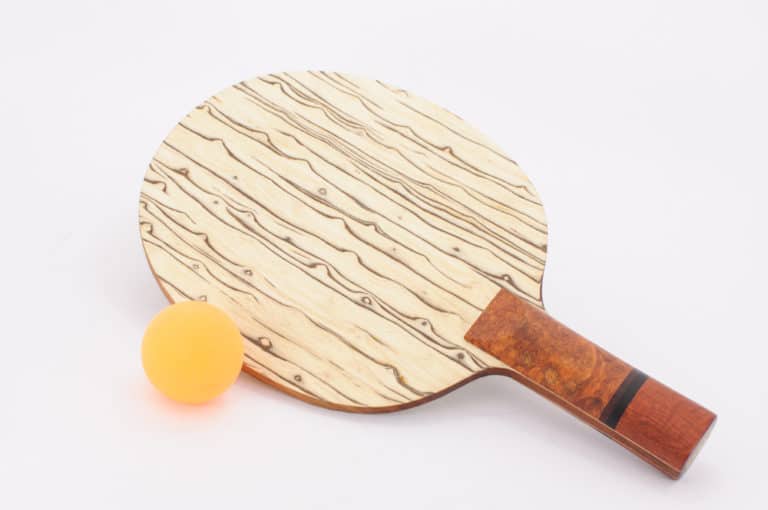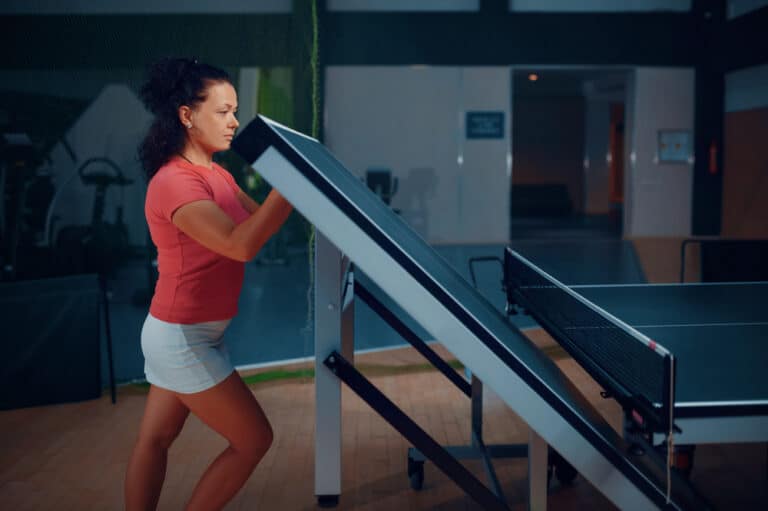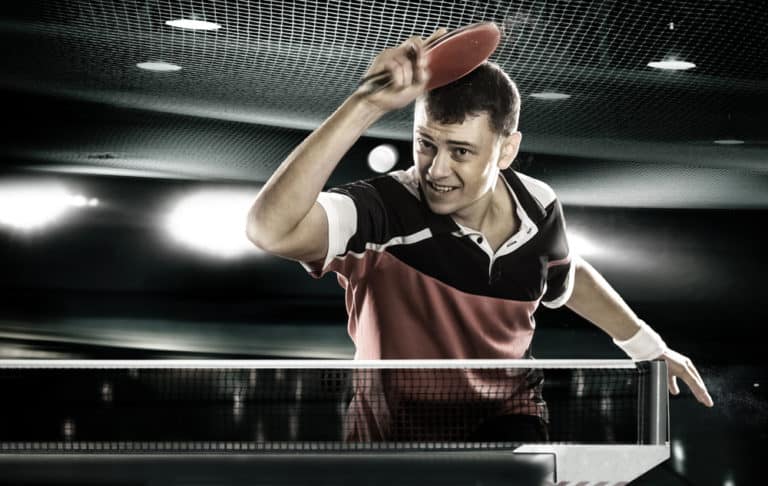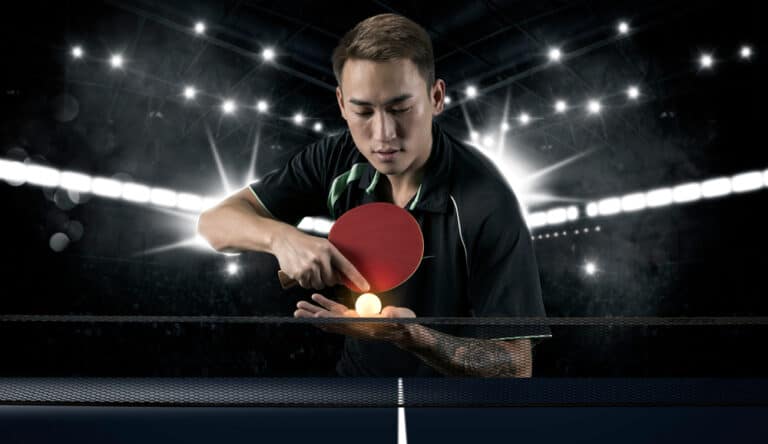Can A Table Tennis Serve Bounce Twice?
Coming from tennis, I thought rules regarding how balls may bounce would be pretty straightforward, but they don’t work the same. While table tennis often involves dexterous plays and a good understanding of the fundamentals, the rules aren’t always familiar to everyone, especially new players or those from other racket sports. So, can table tennis serve bounce twice?
A table tennis serve is not allowed to, at any given time, bounce more than once on the server’s or receiver’s side of the net. If the ball bounces twice on the server’s side, the point immediately goes to the receiver. If the ball bounces twice on the receiver’s side, the point goes to the server.
If you’re having trouble convincing a competitive friend of the legitimacy of the two-bounce rules, this article has you covered! We’ll cover the specific laws in the table tennis handbook that support the reasons for two-bounce points. We’ll also discuss other relative questions to serving and bounces that may come up in your table tennis games.
Can A Table Tennis Serve Bounce Twice?
Suppose there are two players: player A and player B. According to official table tennis rules, if A is serving to B, then for the serve to be valid, the ball must bounce once on the side of A. It must travel over or around the net assembly and bounce once on the side of B.
Player B has to return the serve without allowing the ball to bounce more than once on their side. If B allows the ball to bounce more than once on their side at any time, players A and B stop playing immediately, and player A receives a point.
The question regarding two bounces is pretty interesting because the answer leads to one of the most fundamental characteristics of table tennis serve – the serve’s length.
In the modern style of table tennis, most players prefer to initiate the attack, i.e., play attacking strokes like loop or drive, as early in the rally as possible so that they can control the rally and have a higher chance of winning the point.
A long serve, where the ball will usually go outside the table after bouncing once on each side, is easier to attack as the player has room to get in position and take a big swing. Therefore, short serves are a vital necessity as they make it more difficult for the opponent to attack the serve.
What Is A Short Serve In Table Tennis?
A short serve is a type of serve where the ball has enough backspin to bounce twice on the side of the player receiving the service if left untouched.
Players usually practice their short serves so that the target of the second bounce on the opponent’s side of the table will be just a couple of inches from the table edge. If done perfectly, this will deceive the opponent into thinking it is a long serve, thereby missing the ball or making a bad return.
Ma Lin, a professional table tennis player, was one of the only professional players to make a perfectly placed short serve that tricked the opponent into thinking it was a long serve. Short serves that are particularly good are pretty deceptive and thus earn the title ghost serve.
A ghost serve is an extreme case of short serve where such a considerable backspin is imparted to the ball that, after bouncing first on the server’s side and then bouncing once on the receiver’s side, it will bounce back onto the server’s side of the table.
During a ghost serve, if the receiver fails to return the ball, the point will go to the player that made the serve. Here’s a video of Ma Lin practicing his short serves. The video shows that getting a ghost serve is actually very difficult. In fact, they are exceptionally rare to see, even in major tournaments.
What If The Ball Bounces Twice On The Server’s Side?
If player A serves to player B, and player A allows the ball to bounce more than once on their side, then the point goes to player B.
Not all players know how balls are allowed to bounce, especially new players. Furthermore, trying to find a straightforward answer can be frustrating, so here’s the deal!
At no point in table tennis is any serving player allowed to have the ball bounce more than one time on their side of the table.
What If Spin From A Serve Causes The Ball To Bounce Back?
If player A serves to player B, and the ball has enough spin to bounce back the side of player A without giving player B a chance to hit it, player A will get the point.
The rules of table tennis allow serves to be long or short. As such, when player A sends the ball over the net, the rules consider it on the opponent’s side – on the side of player B. If player B does not return the ball, no matter how difficult it is to reach it, the point still goes to player A.
The reasons for this ruling stem from the table tennis laws in the official handbook, namely 2.10, 2.7.1, 2.10.1, and 2.10.1.13. The rules that grant points and support this ruling include:
Additionally, laws that grant points and support this ruling include:
- 2.7.1 – After being served or returned, the player must hit the ball to make contact with the opponent’s court, either directly or after passing over the net assembly.
- 2.10 – If an opponent does not make a correct return.
- 2.10.1 – A player will score a point unless the rally is a let.
- 2.10.1.3 – A player will get a point if the ball touches anything other than the net assembly after a player makes or returns a serve, and the opponent does not strike it.
In the case of a ball with spin, if a player reaches across the net and makes contact with the ball, they lose the point immediately. If the player were to hit the ball in such a way that it first lands on their side of the net, it’s an invalid return, and they also lose a point.
Of course, the opposite also rings true: if player B returns the serve from player A, and it has the right amount of spin to bounce back to player B’s side without player A having a chance to hit it, player B gets the point.
In order to prevent a ball with spin from costing a point, the player must quickly whack the ball before it has a chance to bounce on the other side of the table. In this case, players can go beyond the net, standing on the side of the net to hit the ball.
If it sounds impossible to defend against this type of shot, know that hitting the ball with the right amount of spin for this trick shot is nearly impossible to replicate. More often than not, it results in the ball being too high or hitting the net.
Can Table Tennis Players Go Past The Net To Hit The Ball?
When you are on the other end of a spinning ball, and it’s on its way back to the server, what’s the best way to defend? Players can go past the net as long as they don’t touch it.
For instance, if the ball bounces near your net, you can reach over the net with your arm and hit it. If the ball happens to bounce on your side due to backspin and heads toward your opponent’s side, you can even go around the net to your opponent’s side and hit the ball down onto your opponent’s side of the net.
To summarize, if your actions don’t interfere with the net, net post, or your opponent, you are free to run anywhere around the table.
In fact, did you know that you can play while standing on the table? Don’t believe it?
Your free hand is the only part of your body that may not touch the table. So, if you hold the paddle in your left hand, you may not touch the table with your right hand, and vice-versa.
In other words, your legs, torso, and even your elbows can touch the table, but not your free hand. However, while it might sound fun to play on the table, moving the table causes you to lose the point immediately! So, unfortunately, playing while standing on the table becomes a little unpractical!
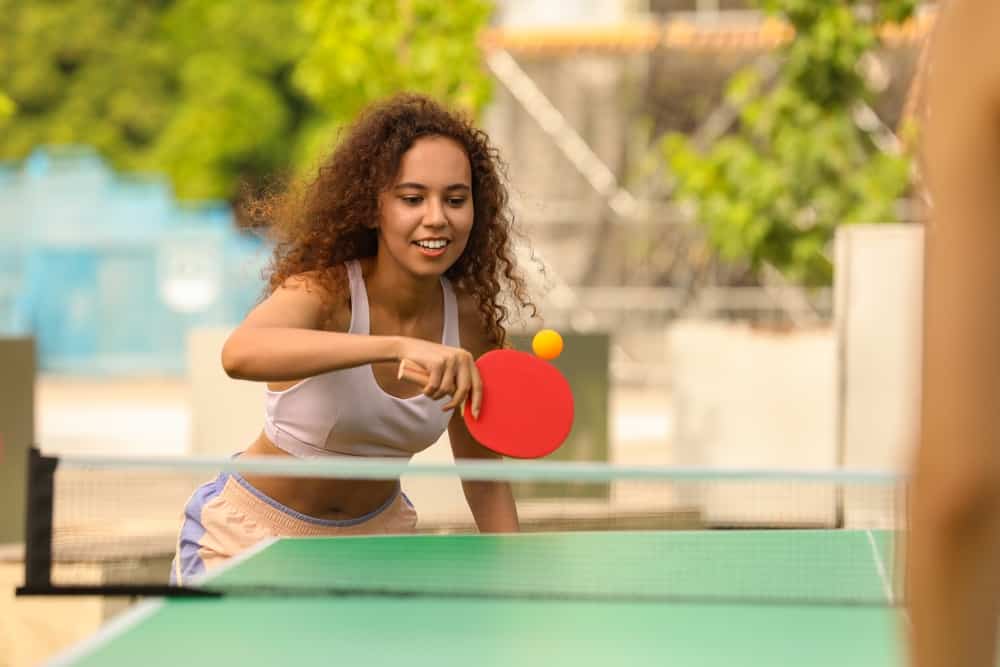
Can You Hit A Table Tennis Ball Before It Bounces?
You might come from other racket sports like tennis or badminton, in which case you’ll be familiar with the term volley. Volley refers to the act of hitting the ball coming toward you without letting it bounce.
In table tennis, volley does exist but not doesn’t really form part of the playing experience in the same manner as something like tennis or badminton. The point is over when you hit the ball in table tennis without first allowing it to bounce. However, who gets the point?
To know who gets the point, players must examine the ball’s position in relation to the table and the player who made the volley shot. Ask this question:
- When the receiving player hit the ball, was it still over the table or past the table?
If the ball was over the table when the receiving player did their volley, the point goes to the opponent. The fact that the ball was still over the table when the receiving player made the volley means the ball was still in play.
However, if the ball goes past the table – meaning past the end line of the table – and the receiving player hits a volley, the receiving player gets the point. The reason for this is that the player that hit the ball to the receiving player knocked it out of bounds on the full.
What about fast balls? It’s not uncommon for balls to travel at speeds of 70 mph (112.5 kph), but what happens when a player hits such a ball while it’s over the table, but it’s obvious it would never bounce?
It is still the opponent’s point because the ball is still over the table.
Can You Serve Outside The Side Lines In Table Tennis?
You can serve from outside the sidelines of a table tennis table, as long as the ball is behind the end line of the table – supported by the table tennis law 2.6.4
Law 2.6.4 in the table tennis handbook states that from before a player serves and until they hit the ball, the ball must be above the playing surface (not bouncing or rolling) and go behind the server’s end line. As such, it also emphasizes the height at which the server must release the ball before they hit it.
Furthermore, the receiver must be able to see it easily and not hidden in any way or by their doubles partner or worn objects and attire.
So it is perfectly legal to make a table tennis serve from way outside the sidelines of the table, given that the ball remains behind the end line at the start of the serve. However, this kind of serve is hardly a standard practice because, more often than not, it places the server at a position disadvantage for the returning shot or rally from the receiver.
Conclusion
Table tennis balls may never bounce more than once, whether serving or rallying. When it does, the player who lets the ball bounce twice on their side of the net will immediately lose the point. Balls that have a spin and bounce back can be tricky to defend but remember you can navigate to the side of the net and hit the ball, provided you don’t touch the net post or interfere with the opponent.
Sources
- https://www.youtube.com/watch?v=v8advrudYZs
- https://www.quora.com/Table-Tennis-Who-gets-the-point-if-the-ball-bounces-two-times-on-the-opponents-side-at-the-time-of-serve
- https://www.quora.com/In-table-tennis-must-the-ball-bounce-on-both-your-side-and-the-opponents-side-after-you-hit-it
- https://www.quora.com/In-tennis-does-the-ball-have-to-bounce-before-you-can-hit-it-back
- https://www.quora.com/Table-Tennis-Is-it-possible-for-the-ball-to-bounce-back-to-the-servers-side-in-a-legal-serve
- https://www.liveabout.com/how-to-serve-legally-in-table-tennis-ping-pong-4122899
- https://s3.amazonaws.com/file.imleagues/Images/Schools/Uploaded/201707/201772091856.pdf

